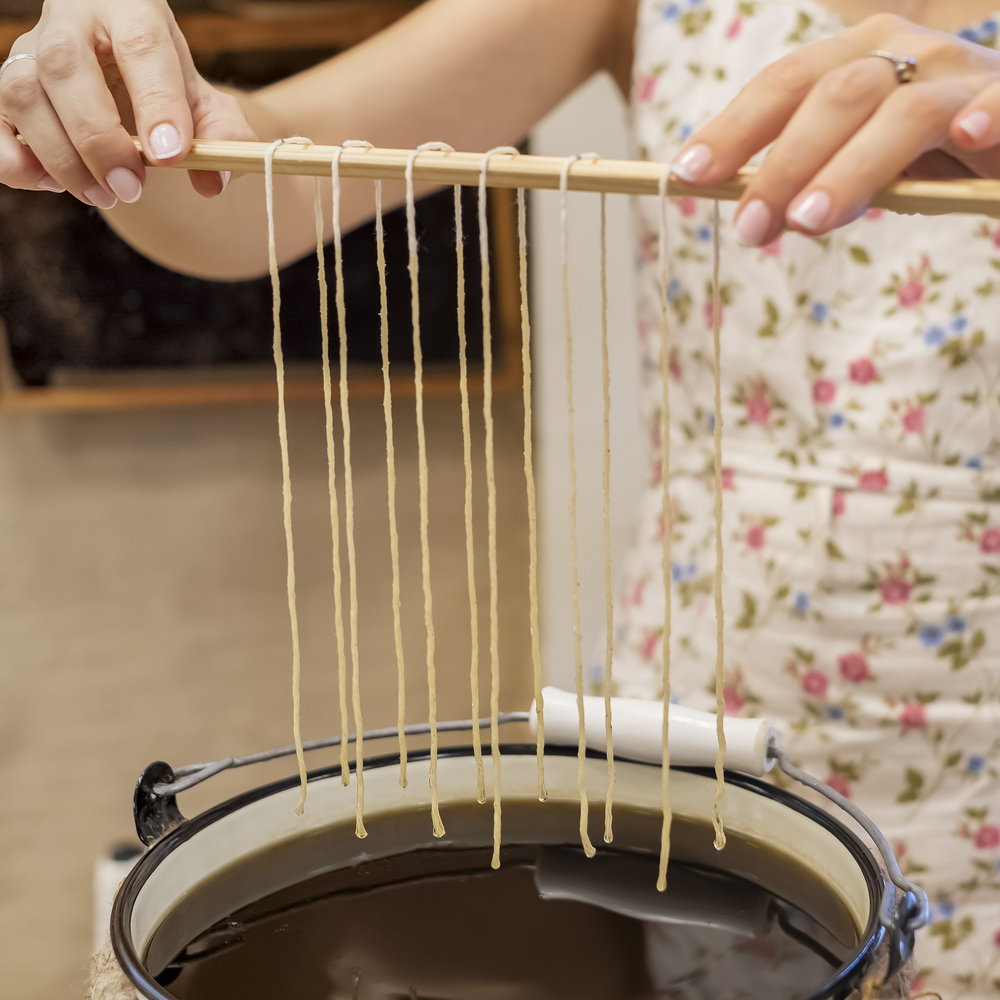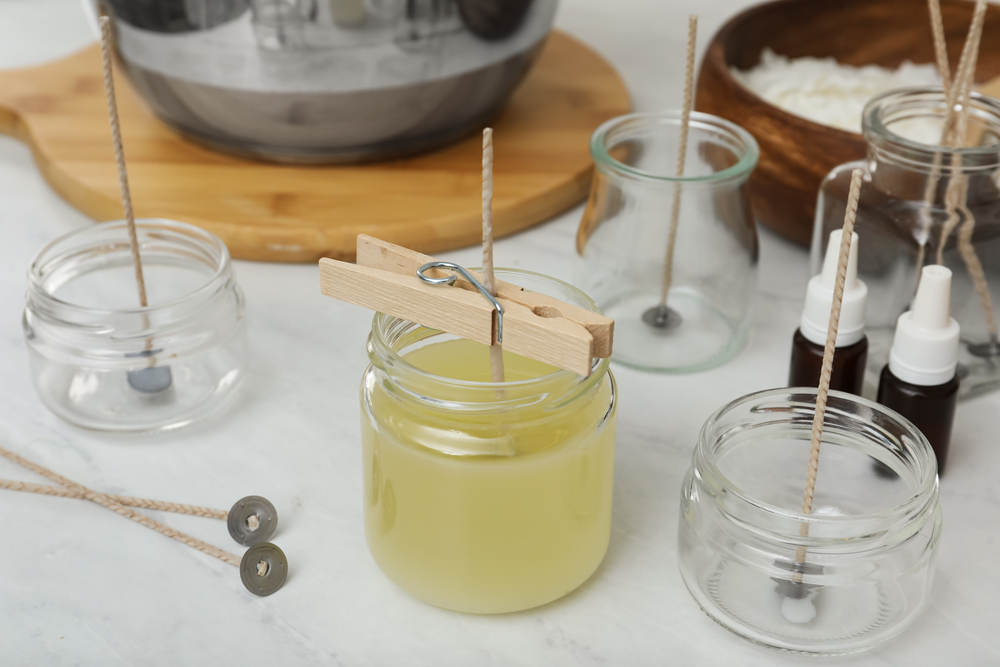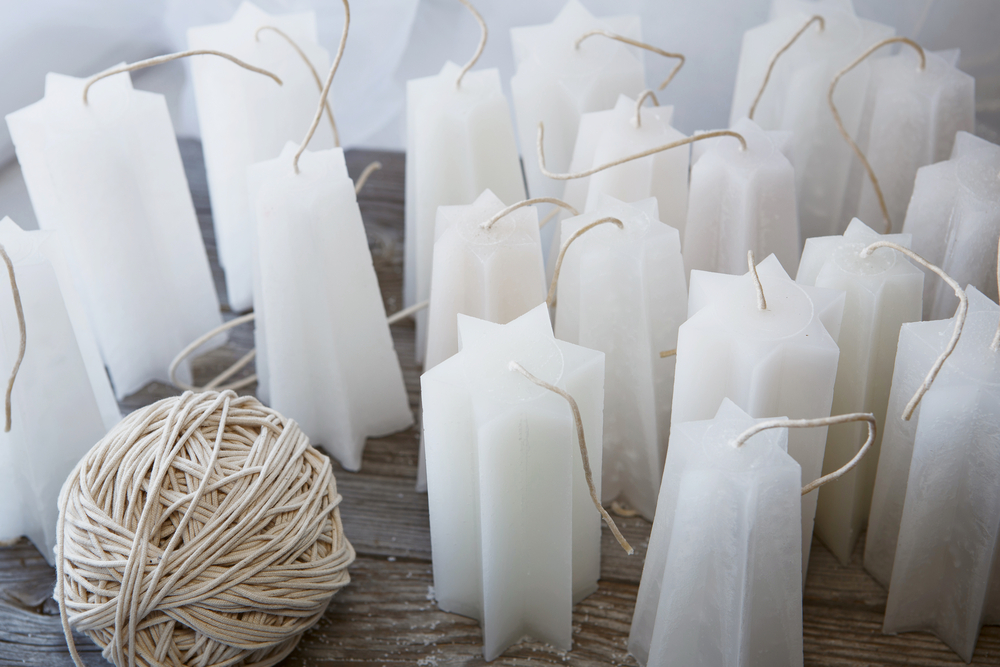Are you obsessed with candles? Do you enjoy tea light on special occasions? Approximately $3.14 billion in annual sales of candle products says you’re not the only one.
Whether you’re planning to make homemade candles to earn a living or just for fun, you can make your own candles right at home. All you need is soy wax, bowls, saucepans, essential oil blends, candle molds, and more, importantly, a candlewick.
And although you can buy candle wicks, making your own candle wick gives you the ability to choose the right size that fits your specialty candles. But how exactly do you make your candle wicks at home?
This post discusses a candle wick and outlines some best ways to make homemade candle wicks.

Let’s get started!
What are candle wicks?
A candle wick is a coated cotton that holds the flame of a candle or an oil lamp. It follows the capillary actions to work, drawing the liquefied wax up into the flame to burn.
Although the wicks are mostly made using cotton strings, you also can use old t-shirt scraps, reusable fabrics, or wooden sticks. Whatever type of candle wicks you use, ensure you find the right wick size for your candle.
A properly wicked candle burns cleaner and provides reliable burn times and fragrance throws. It works perfectly to enhance the mood in the room.

Choosing candle wicks
You can make a candle wick using a cotton twine or a small piece of wood. If you choose to make your wick from the cotton twine, you may use it alone or soak it in different materials, including salt, borax solution (most recommended), or olive oil.
As mentioned above, the size of the candle wick, type of wax, among other factors, also affects your final candle product.
Here are the things to look for when choosing your candle wick:
- Minimal or no blooming of carbon deposits
- Your flame size
- Minimal or no dripping
- Container temperature
Candle wicks treated in borax solution are the most common wicks, but you can use other materials for your wick.
How do I make candle wicks?
Craft projects such as making homemade candles are therapeutic – they can be vital in reducing tension and relieving stress. Making candle wicks and handling essential oils, perfumes, and colors is a surefire anxiety-reliever.
Here is one of the best DIY wicks guides for making the different types of candle wicks at home:

Making Borax candle wicks
As the name suggests, Borax candle wicks are made using the borax solution. Also known as sodium tetraborate or sodium borate, Borax is a powdery white substance used as a common household item for cleaning or as a booster for laundry detergent.
To make your own wicks using this powder, here are the steps to follow:
Heat water
The first step is to heat about 1 cup (250 ml) of water using a tea kettle or a small saucepan. Let the water reach a simmer, but not a thoroughly boil
Make the Borax solution
The next step is to pour the water into a small glass bowl and add three tablespoonful (45 ml) of Borax and one tablespoonful of salt. Stir to dissolve and form the Borax solution.
Important:
- The Borax solution allows you to make long-lasting candles that burn brighter
- The Borax solution also reduces the amount of ash and smoke produced by the candle
- Borax should be kept away from pets and children. The product is toxic and may cause complications when inhaled or ingested.
Also, store the Borax powder as indicated in the manual that comes with it.

Soak the cotton twine
Submerge the cotton twine in the Borax solution and leave it for about 24 hours.
Important:
- Ensure that the cotton twine used is longer than the height of the container. If you’re unsure how tall the candle will be, soak up to 1 foot of cotton twine and trim its size later.
- Although the butcher’s cotton twine is recommended for candle wicks, any thick cotton cord should work just fine. You may use a torn piece of cotton cloth embroidery cotton, or a shoelace
- Leaving the twine soaked for a long time is key for the best results. You may remove the string from the Borax solution as soon as after 30 minutes, but the results will not be as perfect.
After 24 hours, your cotton twine will be ready for drying and use.
Dry the cotton twine
Using tweezers, remove the cotton twine from the Borax solution. Hang it and leave it to dry for two to three days.
Note: You can place an aluminum foil beneath the drying twine to trap the excess Borax solution. Make sure that the cotton twine is fully dry before you continue.
Melt the wax
Melt about 60 ml to 125 ml of beeswax candles
using a double boiler setup. You can use a small saucepan or a clean metal in the place of the double boiler.
Heat some water in the saucepan, letting it simmer without boiling. Then, place the metal can inside the hot water and leave it for about a minute to heat before adding the wax.
Important: Melted wax can lead to severe candle burns, so handle it with care throughout the process.
Add the treated cotton string
Dip the dry Borax treated cotton twine in the melted wax—coat as much of the string with the wax as possible.
Note: You can use the Borax-treated string without adding wax. However, the wax makes it easier stiffer and allows the flame to catch easily on the wick’s end.
Dry the twine
Hang the cotton string and leave it for several minutes to dry. You may place an aluminum foil below the twin to catch excess drippings.
To make stiffer and thicker wicks, you can repeat the process– dipping it in melted wax and drying it.
Inset it in a candle
Your wick should be now ready to be inserted into a candle. Enjoy the resulting flame and fragrance.
Crafting wooden wicks
You may also use balsa wood sticks to make candle wood wicks. You need a wooden stick, a pair of scissors, a container, and olive oil, and you’re ready to go.
Here is the step-by-step guide to making balsa wooden candle wicks:
Trim down the balsa wood sticks
Using a pair of scissors, trim down the length of the balsa wood so that it’s at least 2.5 cm (1 inch) taller than the container you plan to make your own candles with. You can find the thin (1.25 cm to 3.75 cm wide) balsa wood strip in any craft store nearby.
Place the balsa wood in olive oil
Soak the trimmed balsa wood into a shallow bowl and add enough olive oil to cover the wood. Although the wooden strip is flammable, adding olive oil allows it to burn evenly.
Leave the wooden strip soaked in the oil for about 20 minutes. You may decide to wait up to one hour for the best results.
Note: you may use vegetable oil or oil lamp in the place of olive oil.
Remove the excess oil
Remove the wooden strip from the oil and wipe the excess oil using a paper towel. Place the wooden strip on a plate covered with paper towels and leave it for several minutes to dry.
The wood wick should feel damp and slightly oily when ready. But make sure that the strip doesn’t leave an oily residue on your hands.
Use your wood wick as needed
At this point, the treated wooden wick should be ready for use. These wicks are preferred by people that love the scent of burning wood.
Making movable candle wicks
You may also make a movable candle wick by first letting the wax melt.
Melt about 60 to 125 ml of a candle or paraffin wax using a double boiler. If you don’t have a double boiler, you may use a saucepan with water and add a metal bowl.
Then, trim the pipe cleaner and dip it into the melted wax. Repeat the process several times for better results.
At this stage, your candle should be ready for use.
Other methods for making candlewick:
You may also make your candlewick through the following methods:
a. Cotton Ball Method
This is yet another simple method of making candlewick. You’ll need a cotton ball and some twine or string to get started.
Then, wrap the string around the center of the cotton ball until it’s fully covered. Then use the cotton wicks as they are, or trim them down.
b. The wire method
This is yet another popular method of making your own candle wicks. It requires more precision and patience than the cotton ball method, resulting in a much neater and cleaner wick.
You’ll need nose pliers and a thin gauge wire to make this candlewick. Wrap the wire around the wick’s base, then use the needle-nose pliers to twist the two wire’s ends.
Insert the wick into the wax, and let there be light!
The bottom line
Homemade candles are a great way to light up a home. They also play a quintessential role in uplifting individuals’ moods. But without a candle wick, the candles are useless. This post shows you how to make your homemade candle wicks. Good luck as you purpose to use it.
Leave a Reply